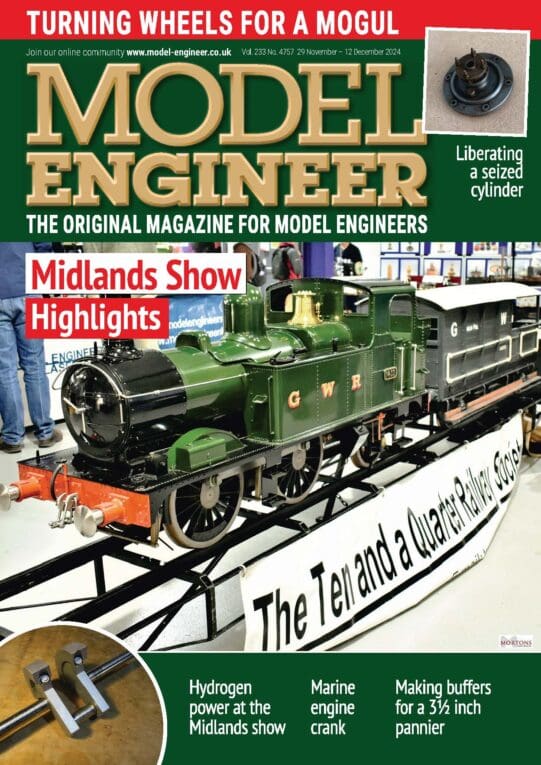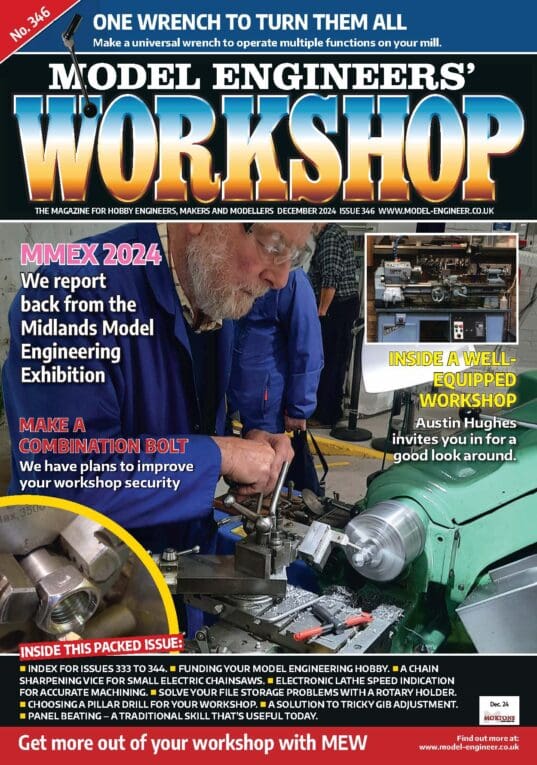Bruce –
You are almost certainly right: a braking system of that vintage in British practice would be vacuum not compressed-air type. Although some miniature locomotives do indeed disguise the boiler feed-pump as a vacuum-pump, where the full-size versions had those prominently fitted (a rare practice), the existence of a receiver does suggest that indeed, this model is fitted with an air or vacuum brake pump.
The far more common practice, culminating in being so on all British Railways’ “Standard” class locos, was that the vacuum is drawn by steam-jet ejector, not a mechanical pump. Two in fact: a large-capacity ejector for releasing dropping the pressure in the entire train system rapidly, and a small one for maintaining the vacuum during the run.
Many miniature locomotives now are fitted with ejectors etc. for vacuum-braked rolling-stock.
‘
Clive –
Indeed. The vacuum system is not for stopping the train and locomotive, but the train, although whether this 3.5″ g. instance would produce enough “nothingness” to be very effective is another matter. It’s still an interesting development though, so I hope this one does work, with suitably-fitted rolling-stock!
Even in full-size the locomotive’s steam-brake is separate from the vacuum system, albeit in some the two systems are linked in one unit whose single handle operates a complicated relay-valve arrangement putting the train-brakes on slightly before the loco brakes, and vice-versa.
The old adage is that the locomotive starts the train, the train stops the locomotive.
.
Philip –
It would be great to see the locomotive back in service!
So we know the vacuum or air-brake dose not stop the engine. It stops the train. So….
The big clue is the nature of the brake pressure-gauge if fitted as one should be: a Vacuum or a Positive-pressure type? NB – pressure-gauges are delicate, and small vacuum-gauges especially so.
Otherwise, to verify what its pump actually does, and understand how its system works, when overhauling it examine which way the valves “point” in relation to the receiver and other fittings.
There should also be a connection on the drag-beam, for connecting the rolling-stock brake plumbing.
Such examination will show which way the air flows through the system when the brakes are applied:
– from the train-pipe, to atmosphere for Vacuum;
– from atmosphere through the system to the train-pipe for Air-brakes.
‘
Normally, brake-application admits the vacuum-destroying air through a hole or holes on the valve itself, located among the other controls on the driver’s side of the footplate. The full-size types have not one air-inlet hole but lots, like a sieve, and quite prominently so.
A simplified, miniature version of the Brake Valve typically has just two positions: Off, and On (admits air to the train pipe, but may give little or no gradual or partial application effect). The receiver’s task is to help regain rapidly, and hold, the vacuum that holds the brakes Off.
.
Where to locate the brake valve – if not yet installed?
Though LBSC’s designs err on the side of simplicity and “ergonomics”, it’s good to represent the cab reasonably accurately, if the Brake Application Valve has not yet been fitted. It’s a smallish but fairly distinctive beast, and you need reach it easily from the driving-truck.
I don’t know GWR cab layouts in detail other than being right-hand drive, but full-size steam-locomotive brake controls were generally either on a stand bolted to the footplate, or apparently on to a bracket on the back-head at about the seated driver’s shoulder-height.
Obviously for the latter case we can’t screw things to the model’s boiler unless suitable mountings for it have been fitted during that unit’s construction, which I doubt here. So we mount a robust but discreet bracket on the cab structure to hold the valve about where it ought be – find some photos of full-size examples to guide you.
(I am assuming by the name this is a GWR loco but the model’s drawings lack such luxuries as train-brake systems. In fact I think putting proper vacuum or brake systems on smaller miniature railway equipment generally, is quite a recent development.)
Nigel Graham 2.





